Mexican sandwiches, or tortas as they are known locally, have become a symbol of popular gastronomy and a reflection of the country’s rich culinary diversity. According to Larousse Cocina and international positioning by portals like TasteAtlas, the top 5 most consumed sandwiches in Mexico are the guajolota, torta ahogada, pambazo, cemita poblana, and cuban. This quintet encapsulates both regional tradition and urban life, becoming gastronomic references within and outside the country.
1. Guajolota: The Queen of Capital Breakfasts
In Mexico City, no morning is complete without a guajolota, the iconic tamal sandwich usually accompanied by atole. Its success lies in its practicality: it’s sold at street stalls near Metro exits, bustling corners, and popular markets. It’s an affordable and energizing option—with a caloric intake that can exceed 800 calories—that serves as “fuel” for the daily routine of millions of capital residents.
The guajolota, also known as “guajolocombo” when paired with atole, is an example of how popular ingenuity turned double-masa into a tradition. Despite nutritional criticisms, its consumption remains massive due to the speed of urban life and economic accessibility, maintaining it as a Chilango cultural icon.
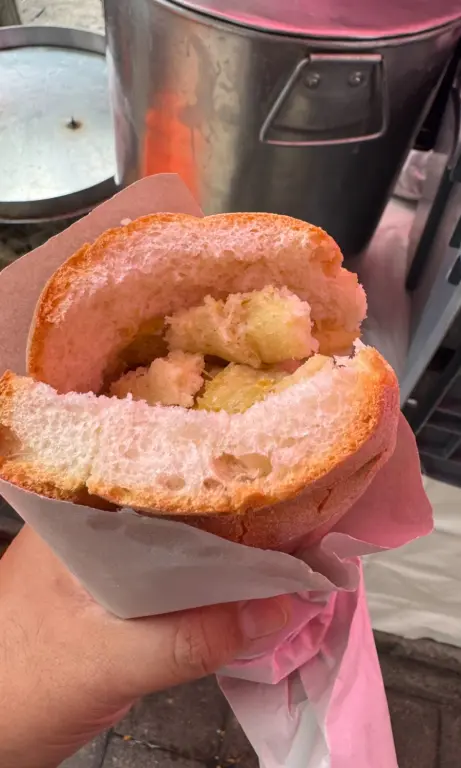
2. Torta Ahogada: Guadalajara’s Pride
The torta ahogada is undoubtedly the quintessential Tapatío symbol. Originating from Jalisco, it consists of a salty bread roll filled with carnitas and “drowned” in tomato sauce or chipotle sauce, depending on the desired level of spiciness. Its popular origin in Guadalajara has solidified into a cultural export, with festivals, competitions, and mentions in international media.
The recognition is not minor: TasteAtlas has placed it among Latin America’s most iconic sandwiches and even included it in lists of famous soups due to its unique serving method, being submerged in sauce. In the streets of Guadalajara and nearby municipalities, it’s consumed daily, especially during informal weekend meals, reinforcing its role as a local gastronomic emblem.
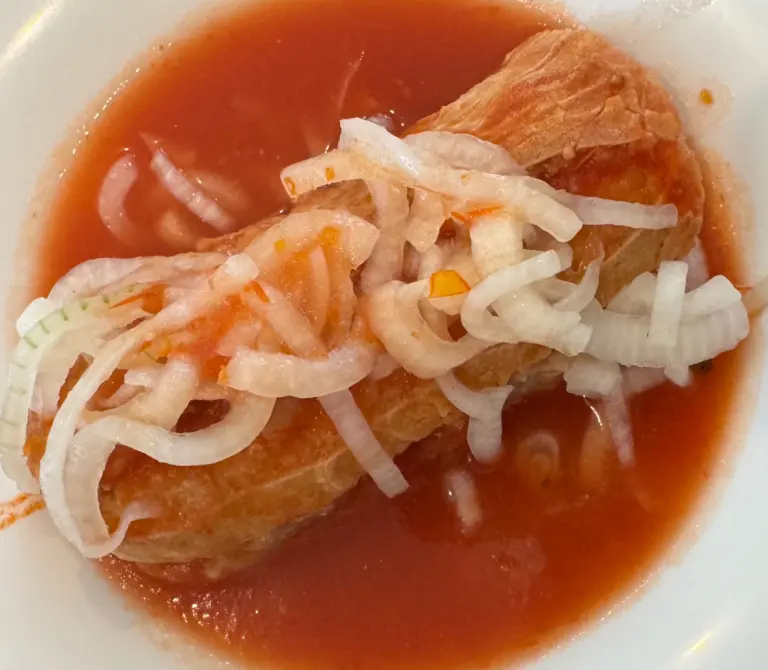
3. Pambazo: Fair and Tianguis Tradition
The pambazo is one of the most representative sandwiches of Mexico City and the State of Mexico. Made with soaked bread in chili guajillo sauce, it’s typically filled with potato and chorizo and topped with sour cream, cheese, and lettuce. Its consumption is associated with popular festivals, patron saint fairs, and tianguis street food, reinforcing its festive character.
This dish, inheriting Chilango traditions, has managed to stay relevant due to its affordability, deliciousness, and visual appeal. Moreover, TasteAtlas has included it among the world’s best sandwiches, reflecting that this street food delight is not only part of the Mexican menu but also gaining space in international gastronomy.
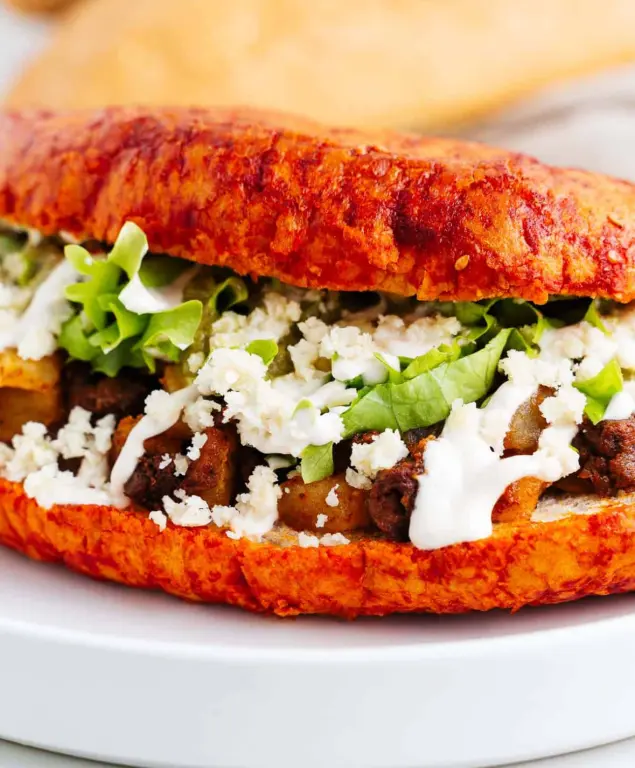
4. Cemita Poblana: The Gem with Sesame Seeds
In Puebla, the cemita is more than just bread; it’s a cultural symbol. Made with a sesame-sprinkled roll, it’s filled with quesillo, cold cuts, breaded steak, and papalo, an aromatic herb that gives it an unmistakable flavor. Its popularity extends beyond the Puebla region, as restaurants in Mexico City and the United States have adopted it as a flagship item on their antojito menus.
The cemita has gained international recognition, with mentions in TasteAtlas and global culinary media. Its strength lies in combining local ingredients with a distinctive bread, making it a unique alternative to the telera or bolillo. For Puebla, it’s also a regional pride that enhances the culinary tourism appeal.
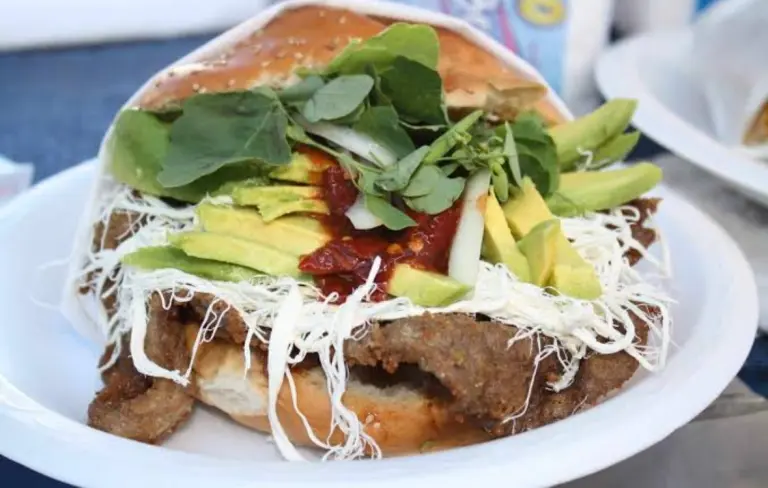
5. Cuban: Excess as Identity
The cuban sandwich is the most abundant and varied in the Mexican repertoire. Popular in Mexico City, it’s known for carrying “everything” – milanesa, ham, egg, quesillo, sausage, beans, avocado, and other ingredients that vary depending on the vendor or fonda. Its fame stems from excess, making it a craving for those seeking a complete meal in one torta.
Primarily consumed at street stalls and popular eateries, the cuban reflects Chilango creativity: with one order, the diner experiences an explosion of flavors and textures. Although it doesn’t have a precise historical origin like the cemita or pambazo, its popularity is undeniable and today it’s an essential part of Mexican tortería, to the point that almost any menu features it as a standard of abundance.
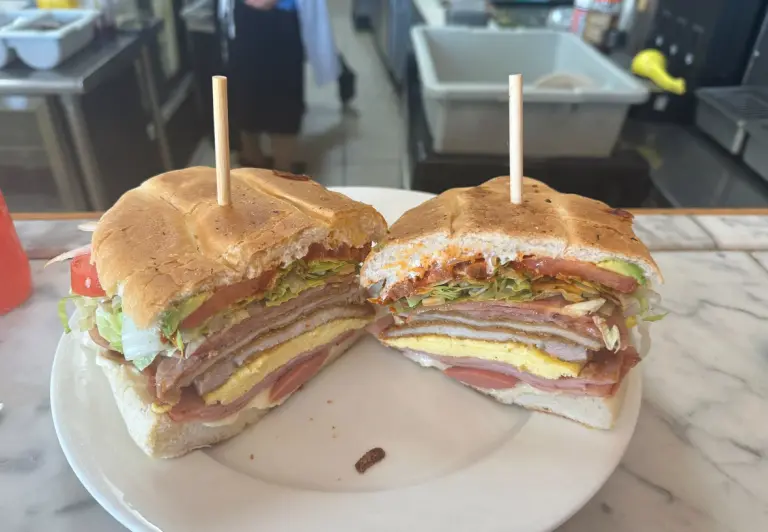
Mexican sandwiches, in all their variations, are a barometer of popular consumption and gastronomic culture. From the urban speed of the guajolota to the regional tradition of the cemita, and passing through the excess of the cuban, these sandwiches make up the top 5 most consumed.






